Dirt Contractors Albany
Best Dirt Removal in Albany
Receive multiple Dirt Contractor quotes for your project today! Compare profiles, reviews, accreditations, portfolio, etc... and choose the best deal.

Quiver League
531 reviews381 South 5th Street, Brooklyn, NY, 11211, USAbout Quiver League Quiver League is at the forefront of revolutionizing the construction and land surveying industry. With a commitment to excellence and innovation, we specialize in monitoring the stability of adjacent structures during Demolition, Support of Excavation ( SOE), and foundation work, along with delivering comprehensive Land Surveying services. What makes Quiver Unique? Quiver League distinguishes itself within the New York City construction industry by leveraging innovative custom software systems. These cutting-edge tools empower both our field and office teams, facilitating the completion of projects at an unprecedented pace—far surpassing the capabilities of our competitors. Our distinctive software not only ensures efficiency but also prevents overwhelm, enabling us to seamlessly manage even the most demanding workloads. Moreover, it allows us to initiate new projects and field installations with remarkable agility, responding promptly to our client's needs, even on short notice.
- Services
- Why Us?
- Testimonials
- Gallery
Get Quote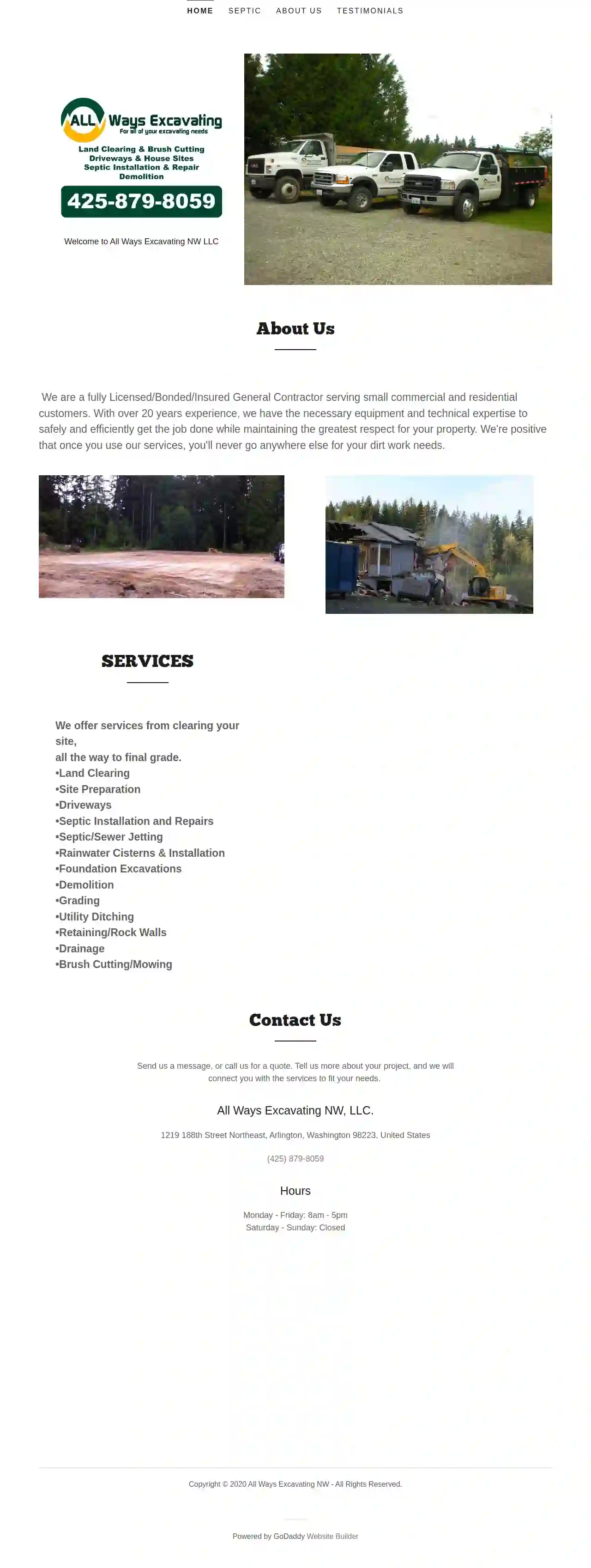
All-Ways Excavating NW, LLC
56 reviewsNew York, US- Services
- Why Us?
Get Quote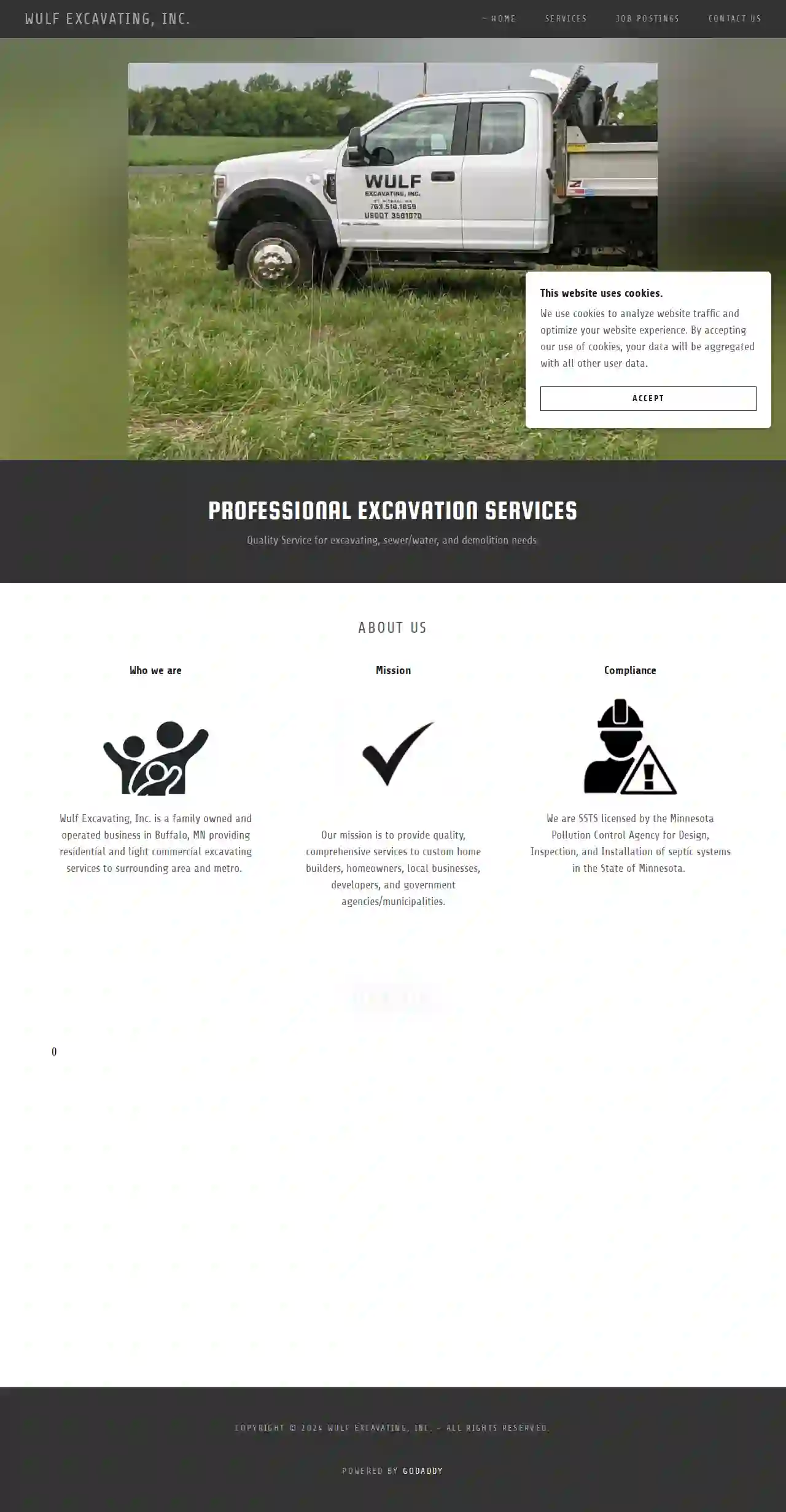
Wulf Excavating, Inc.
51 reviewsBuffalo, US- Services
- Why Us?
Get Quote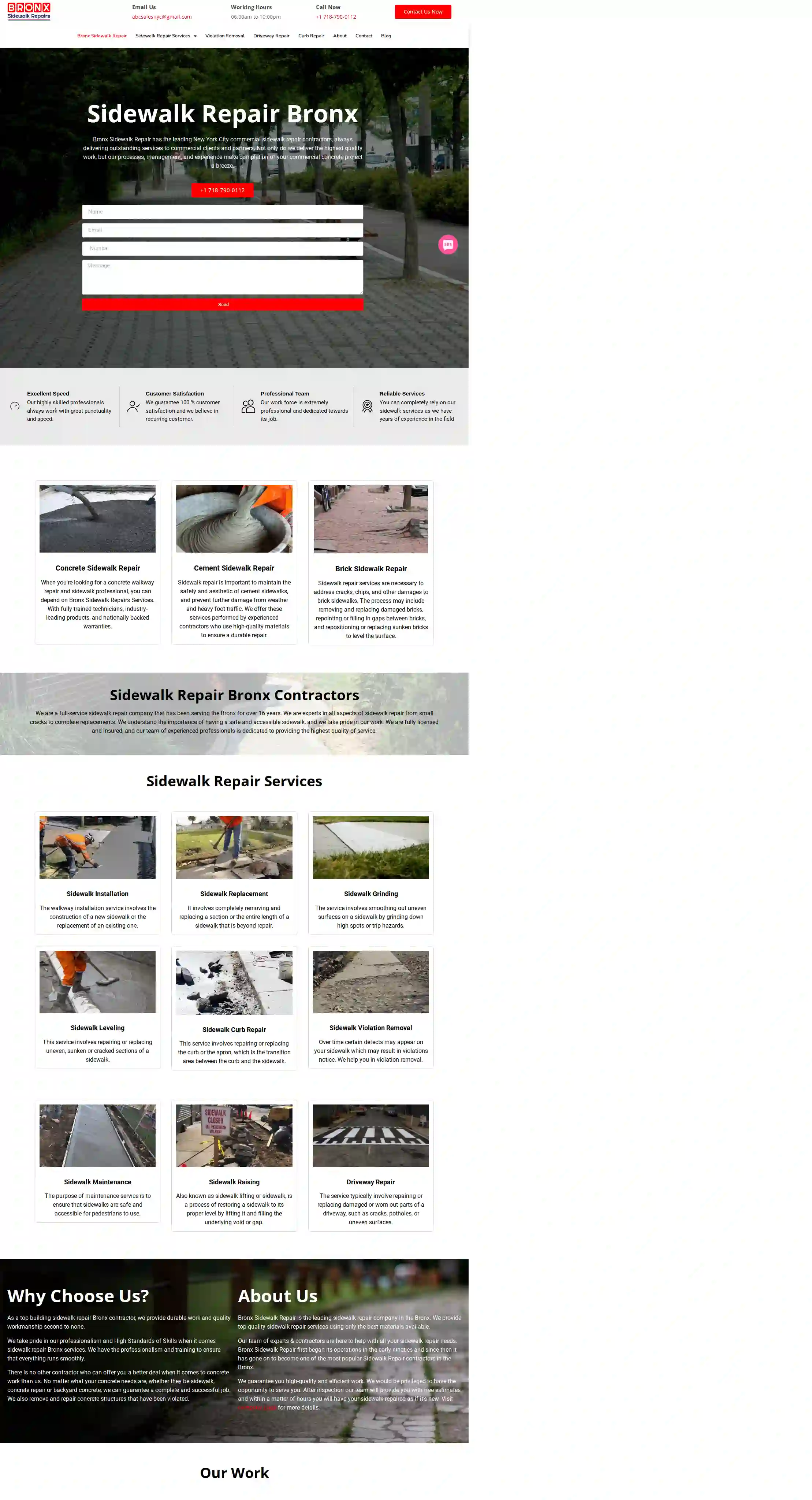
Bronx Sidewalk Repair
4.913 reviewsBronx, New York, USBronx Sidewalk Repair: Your Trusted Partner for Safe and Durable Sidewalks Bronx Sidewalk Repair stands as a leading provider of commercial sidewalk repair services in New York City. We are dedicated to delivering exceptional service to our valued commercial clients and partners. Our commitment extends beyond delivering high-quality work; we prioritize efficient processes, expert management, and extensive experience to ensure your commercial concrete project is a seamless success. Why Choose Bronx Sidewalk Repair? Excellent Speed Our highly skilled professionals are committed to working with exceptional punctuality and speed. Professional Team Our workforce is exceptionally professional and dedicated to their work. Customer Satisfaction We guarantee 100% customer satisfaction and believe in fostering long-term relationships with our clients. Reliable Services You can confidently rely on our sidewalk services, backed by years of experience in the field.
- Services
- Why Us?
- Gallery
Get Quote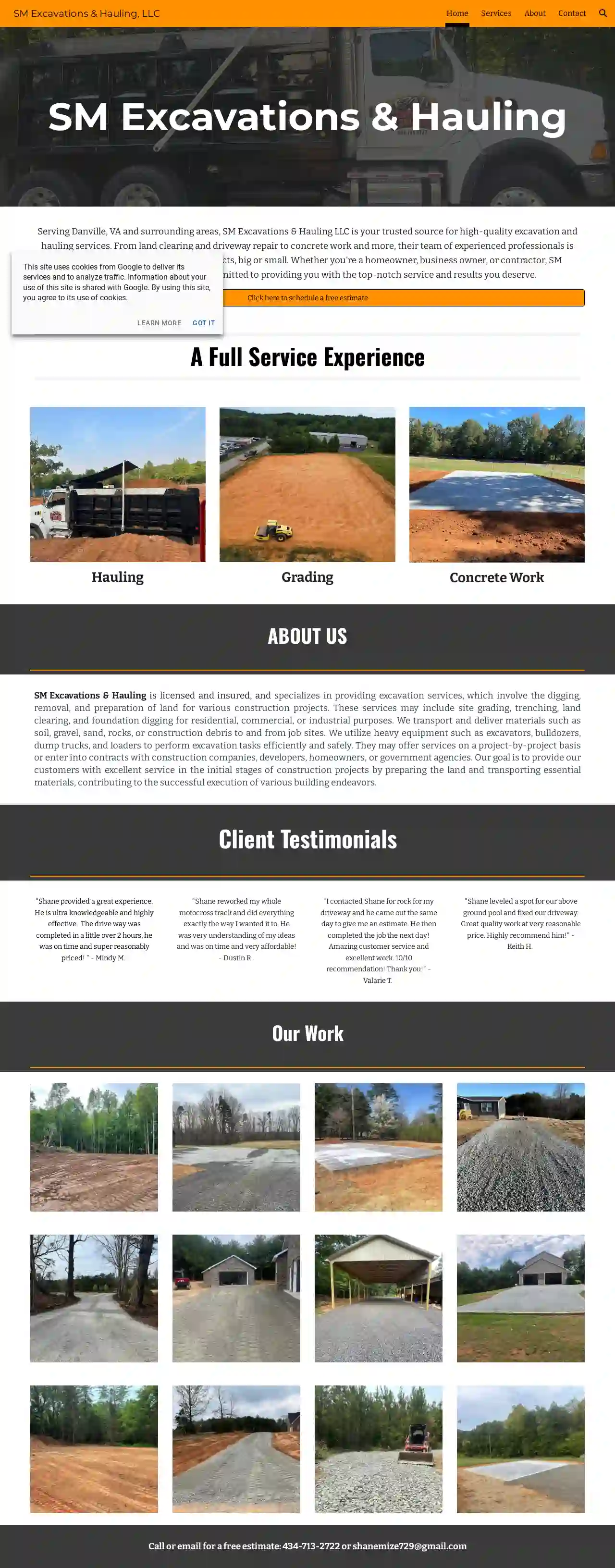
SM Excavations & Hauling LLC
52 reviewsClay, US- Services
- Why Us?
Get Quote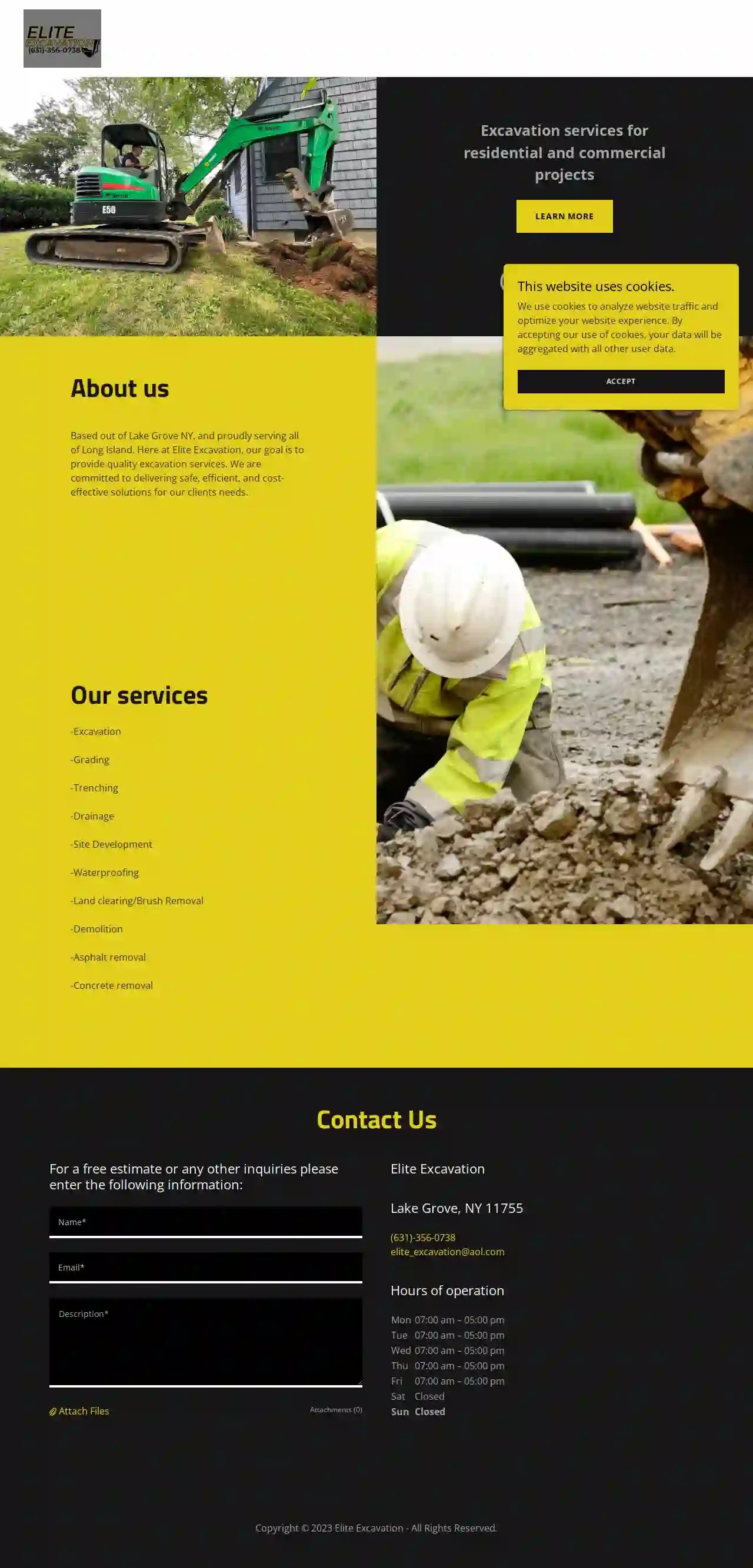
Elite Excavation
51 reviewsLake Grove, NY, 11755, USAbout us Based out of Lake Grove NY, and proudly serving all of Long Island. Here at Elite Excavation, our goal is to provide quality excavation services. We are committed to delivering safe, efficient, and cost-effective solutions for our clients' needs.
- Services
- Why Us?
- Gallery
Get Quote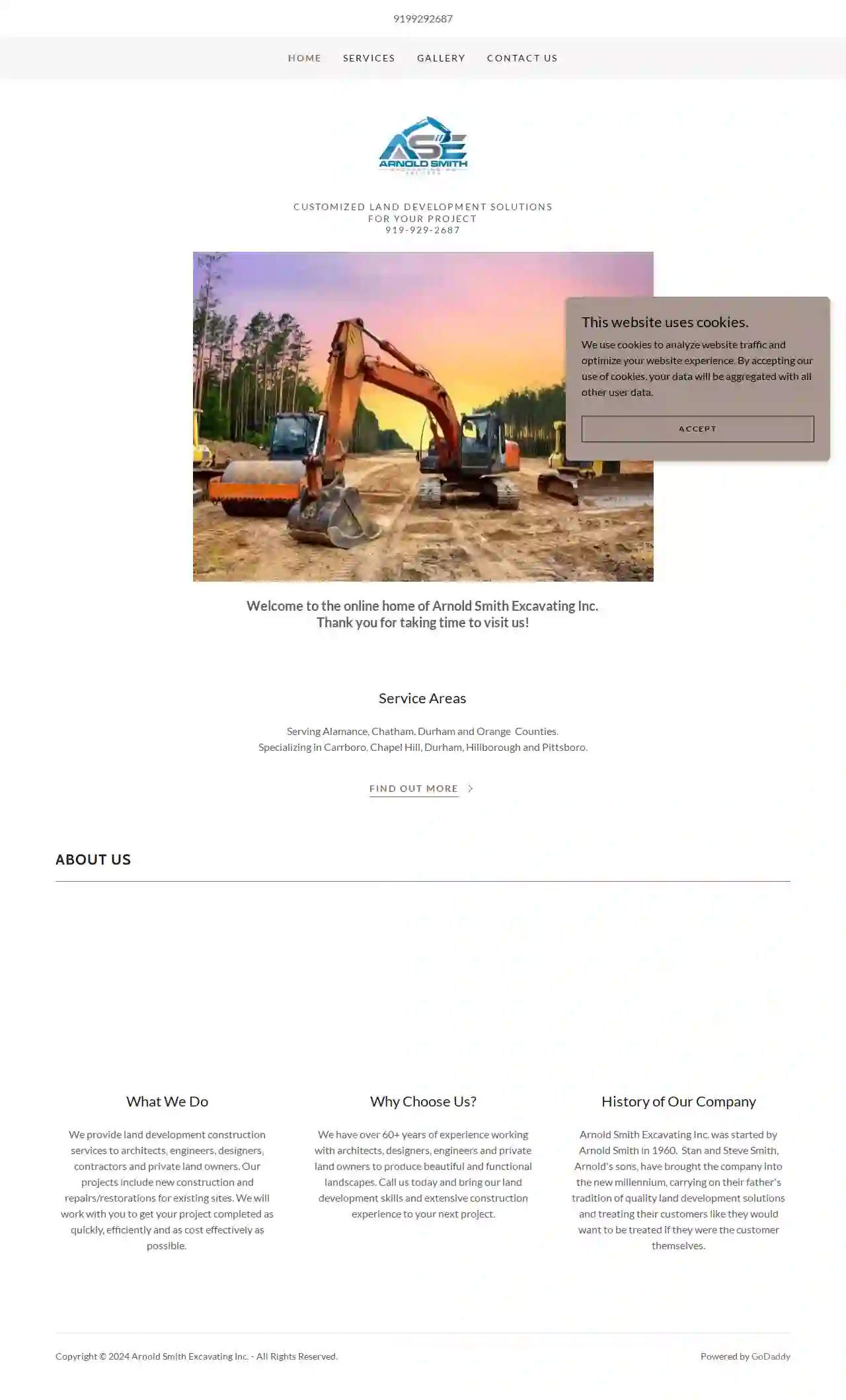
Arnold Smith Excavating Inc
54 reviewsClay, US- Services
- Why Us?
Get Quote
Elite Construction
54 reviewsSuite 101, 123 Main St, Garden City, 11501, USAt Elite Construction, we pride ourselves on providing top-notch general contracting services to our clients in New York City and Long Island. Our family-owned business has years of experience in the field, allowing us to offer a comprehensive experience from project planning to completion. Our mission is to provide the best possible service with honesty and integrity, ensuring our clients' complete satisfaction is our ultimate goal. Our services include demolition, junk removal, teardowns, clean-outs, and complete gut-outs. We specialize in residential and commercial projects, including custom remodeling, renovation, and commercial build-outs. Whether you need help with a general contracting need or require specialized services like demolition or junk removal, we're here to help. At Elite Construction, we're committed to delivering 5-star service, low prices, and a team of dedicated and talented designers, contractors, and craftsmen. We're licensed and insured, and our years of experience have earned us a reputation as one of the top general contractors in the area. Check out our latest work and see for yourself why we're the go-to choice for homeowners and businesses in New York City and Long Island. Contact us today to schedule a free estimate and let us help you bring your project to life.
- Services
- Why Us?
- Accreditations
- Our Team
- Testimonials
- Gallery
Get Quote
Jerry's Driveway Grading & Excavating Services
1Franklinville, USWelcome to the Premier Grading Service in Your Location! As a reputable expert providing comprehensive grading assistance, Jerry's Driveway Grading & Excavating Services is devoted to helping customers in and around Franklinville, NC create attractive, functional properties that enhance their surroundings. With my expertise, you can trust me to get the job done right every time. I specialize in the Following Services:
- Services
- Why Us?
- Gallery
Get Quote
New Bridge Contracting Corp
52 reviews123 Newbridge Ave, Toronto, M4W 2P3, USAbout Newbridge Contracting Inc. Newbridge Contracting Inc. is a reputable and experienced general contracting company serving the Greater Toronto Area. We are dedicated to providing high-quality construction services for both residential and commercial clients. Our team of skilled professionals is committed to delivering projects on time and within budget, while maintaining the highest standards of workmanship. We understand that building or renovating your home or business is a significant investment. That's why we take a personalized approach to every project, working closely with our clients to ensure their vision is realized. From initial planning and design to final construction and completion, we are with you every step of the way. At Newbridge Contracting Inc., we pride ourselves on our commitment to customer satisfaction. We believe in building lasting relationships with our clients, based on trust, transparency, and open communication. We are confident that you will be pleased with the results of your project.
- Services
- Why Us?
Get Quote
Over 3,943+ Excavation Contractors registered
Our excavation contractors operate in Albany and surroundings!
ExcavationHQ has curated and vetted Top Excavation Contractors in Albany. Find a top & trustworthy pro today.
Frequently Asked Questions About Dirt Contractors
- Efficiently Spread and Level Dirt: Using specialized equipment like bobcats or skid steers to ensure even distribution and proper compaction.
- Achieve Precise Grading: Following specific grades and contours for drainage or construction purposes.
- Handle Large Volumes of Dirt: Managing large deliveries and removals with dump trucks and other heavy machinery.
- Minimize Risks and Ensure Safety: Working safely and efficiently, reducing the potential for injuries or property damage.
- Project Scope: The size and complexity of the project, including the volume of dirt to be moved, the distance for hauling, and the type of services required.
- Dirt Type: Different dirt types have varying costs based on availability and demand. Topsoil is typically more expensive than fill dirt.
- Location: Costs may differ depending on the contractor's location and the accessibility of the project site.
- Equipment Needed: Specialized equipment, such as excavators, bulldozers, or dump trucks, can influence the overall cost.
- Labor Costs: The number of workers and their hourly rates will affect the labor portion of the cost.
- Clear the Area: Remove any obstacles, such as furniture, toys, or landscaping features, from the designated delivery zone.
- Mark Utilities: Contact your local utility companies to have underground utilities, such as water lines, gas lines, or electrical cables, marked to prevent accidental damage during delivery.
- Protect Existing Landscaping: Cover or move any valuable plants, shrubs, or trees that might be affected by the dirt delivery.
- Provide Access: Ensure the delivery truck has clear access to the delivery zone, including wide enough gates or driveways.
- Communicate with the Contractor: Discuss any specific instructions or concerns you have with the dirt contractor before delivery day.
Can I spread dirt myself, or should I hire a professional?
How much does it cost to hire a dirt contractor?
What is the difference between dirt delivery and dirt removal?
Dirt Delivery: Involves transporting and delivering various types of dirt to your location. This could include topsoil for gardening, fill dirt for leveling ground, sand for construction projects, or gravel for driveways.
Dirt Removal: Focuses on excavating and hauling away excess dirt or soil from your property. This is often needed for construction projects, landscaping renovations, or when clearing land for other purposes.
Whether you need dirt brought in or taken out, choosing the right service is essential for your project's success.
How do I prepare my yard for dirt delivery?
Can I spread dirt myself, or should I hire a professional?
- Efficiently Spread and Level Dirt: Using specialized equipment like bobcats or skid steers to ensure even distribution and proper compaction.
- Achieve Precise Grading: Following specific grades and contours for drainage or construction purposes.
- Handle Large Volumes of Dirt: Managing large deliveries and removals with dump trucks and other heavy machinery.
- Minimize Risks and Ensure Safety: Working safely and efficiently, reducing the potential for injuries or property damage.
How much does it cost to hire a dirt contractor?
- Project Scope: The size and complexity of the project, including the volume of dirt to be moved, the distance for hauling, and the type of services required.
- Dirt Type: Different dirt types have varying costs based on availability and demand. Topsoil is typically more expensive than fill dirt.
- Location: Costs may differ depending on the contractor's location and the accessibility of the project site.
- Equipment Needed: Specialized equipment, such as excavators, bulldozers, or dump trucks, can influence the overall cost.
- Labor Costs: The number of workers and their hourly rates will affect the labor portion of the cost.
What is the difference between dirt delivery and dirt removal?
Dirt Delivery: Involves transporting and delivering various types of dirt to your location. This could include topsoil for gardening, fill dirt for leveling ground, sand for construction projects, or gravel for driveways.
Dirt Removal: Focuses on excavating and hauling away excess dirt or soil from your property. This is often needed for construction projects, landscaping renovations, or when clearing land for other purposes.
Whether you need dirt brought in or taken out, choosing the right service is essential for your project's success.
How do I prepare my yard for dirt delivery?
- Clear the Area: Remove any obstacles, such as furniture, toys, or landscaping features, from the designated delivery zone.
- Mark Utilities: Contact your local utility companies to have underground utilities, such as water lines, gas lines, or electrical cables, marked to prevent accidental damage during delivery.
- Protect Existing Landscaping: Cover or move any valuable plants, shrubs, or trees that might be affected by the dirt delivery.
- Provide Access: Ensure the delivery truck has clear access to the delivery zone, including wide enough gates or driveways.
- Communicate with the Contractor: Discuss any specific instructions or concerns you have with the dirt contractor before delivery day.